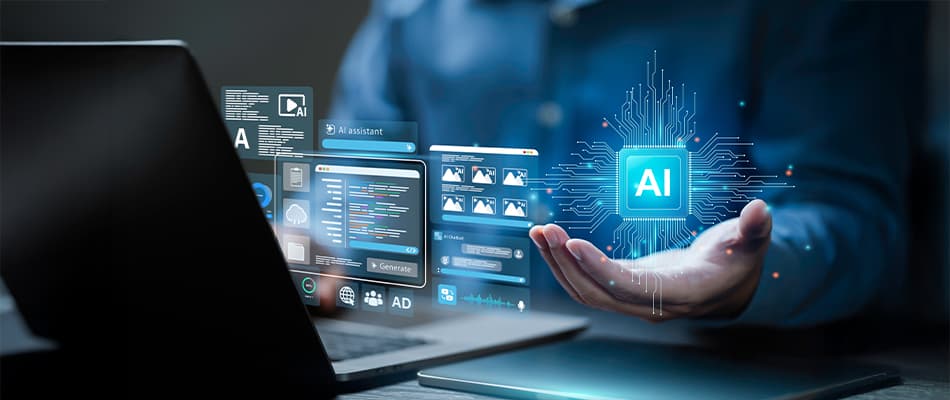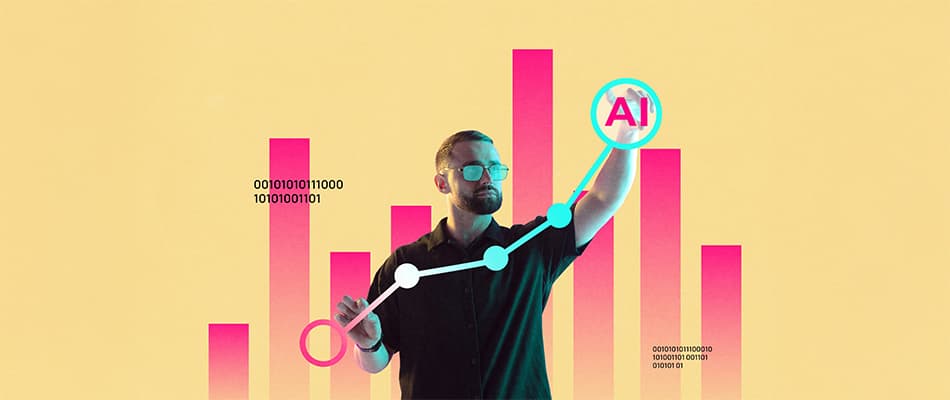Natural Language Processing & Computer Vision
Artificial intelligence has progressed rapidly, enabling machines to understand language, interpret images, and perform tasks previously limited to human cognition. Two of the most influential technologies driving this progress are Natural Language Processing (NLP) and computer vision.
Natural Language Processing helps machines understand and create human language. Computer vision helps machines identify patterns, objects, and scenes in images and videos. When we combine NLP and computer vision, we get powerful multimodal AI systems that understand both text and visuals. This leads to smarter and more context-aware AI.
In this blog, we explain how these technologies work, why their integration matters, and how they are shaping modern AI.
How NLP Works?
Natural Language Processing helps machines understand text and speech using basic language rules and machine learning. Core techniques include tokenisation, part-of-speech tagging, syntactic parsing, semantic role labelling, and named entity recognition.
Modern transformer-based architectures allow NLP models to capture long-range dependencies and understand context more accurately. These methods help systems translate languages, analyse sentiment, summarise content, and generate coherent responses.

How Computer Vision Works?
Computer vision focuses on enabling machines to interpret images and videos through a series of layered processing steps. Techniques such as image preprocessing, feature extraction, object detection, and semantic segmentation form its foundation.
Models like CNNs and Vision Transformers enable systems to identify shapes, textures, and objects with precision. These algorithms power applications such as facial recognition, medical imaging diagnostics, and scene detection.
Understanding these visual methods makes it easier to see how NLP and computer vision come together in vision-language models (VLM).
Read about Cloud computing for beginners.
Why Integration Matters – Vision-Language Models & Multimodal AI
NLP computer vision integration enables systems to reason simultaneously across text and visual signals. Vision-language models like CLIP, BLIP, GPT-4, and LLaMA combine image translators with language models. They create a single shared understanding of both images and text.
This multimodal approach supports tasks such as describing images, answering visual questions, and aligning text with its visual meaning. Integration enhances context awareness, improves accuracy, and leads to richer human-AI interactions.
Understand more about Databases.

Key Real-World Use Cases
Multimodal AI plays a critical role across industries. Image captioning uses computer vision to interpret visuals and NLP to produce text descriptions. Visual question answering applies models of vision-language to respond to questions about an image.
Video analysis uses speech, text, and visuals to understand and process videos. It is used for tasks such as security monitoring, sports insights, and the creation of educational content.
To better illustrate these capabilities, the following table highlights some of the most impactful multimodal functions:
This table explains the key vision-language model capabilities
|
Capability |
How It Works |
|
Image Captioning |
CV interprets the image; NLP generates descriptive text |
|
Visual Question Answering |
NLP processes the question; CV analyses the image context |
|
Multimodal Search |
Aligns text queries with visual representations |
|
Scene Understanding |
Combines visual cues and linguistic reasoning for interpretation |
With these practical applications in mind, we now turn to the tools used to build such systems.
Tools & Frameworks to Start
Developers can begin exploring NLP and computer vision through widely used Python libraries. For NLP, tools like spaCy, NLTK, and Hugging Face Transformers are the primary ones.
For computer vision, OpenCV, PyTorch, TensorFlow, and KerasCV offer essential capabilities. FastAI and multimodal frameworks such as KerasNLP further streamline the development of vision-language models.
Knowing the tools is important, but understanding the challenges ahead is equally essential for developing robust multimodal systems.
Get insights on GitHub for language processing.

Why Choose Digital Regenesys for Your Learning?
Digital Regenesys offers courses that match industry needs. Expert mentors guide you through every step. You can learn online at your own pace. Courses like the Artificial Intelligence Certificate Course help you master NLP, computer vision, and VLM with ease.
You work on practical projects that build real skills. The learning path is clear and well-structured. The training focuses on helping you grow your career. These courses prepare you with strong, future-ready AI skills for real opportunities.
Advantages of Joining Digital Regenesys:
- Industry-relevant AI curriculum
- Hands-on NLP and computer vision projects
- Expert-led learning experience
- Flexible online classes
- Career-focused skill development
- Access to modern AI tools and frameworks
- Structured progression from beginner to advanced
Conclusion
Natural Language Processing and computer vision are transforming the landscape of artificial intelligence. Their integration in advanced VLMs helps AI understand and work with different types of data. This creates new chances in automation, analytics, customer support, and innovation.
When you learn the basics, try simple tools, and study real examples, you can start building smart multimodal systems. These systems represent the future of AI.
Choose Digital Regenesys to learn AI and build the skills you need for a strong career in language learning and technology.
FAQs
What is the difference between NLP and computer vision?
NLP helps computers understand and create human language by studying text and speech. Computer vision enables computers to read images and videos by detecting objects and patterns. NLP works with meaning in language, while computer vision works with what we see. When we combine both, we get multimodal AI systems that use language and visuals together.
How do NLP and computer vision work together?
They work together through multimodal models that merge text and visual representations. Computer vision first extracts visual features, and NLP interprets associated language. Vision-language models bring text and images together. They help AI create captions, answer questions about pictures, and understand what is happening in a scene. These models enable systems to think about images and text simultaneously.
What are common applications of combining NLP and computer vision?
Common applications include image captioning, visual question answering, multimodal search, content moderation, video summarisation, autonomous driving perception, and medical imaging reports. These systems combine computer vision for visual understanding and NLP for language interpretation, providing deeper, context-aware insights across multiple domains and industries.
Which tools support both NLP and computer vision tasks?
Frameworks such as PyTorch, TensorFlow, Hugging Face Transformers, FastAI, KerasCV, and KerasNLP support the development of multimodal systems. These tools offer ready-to-use models, datasets, APIs, and other helpful parts. They make it easy to build apps that combine NLP and computer vision. They also help you test ideas quickly and deploy advanced AI solutions without much effort.
What are the main challenges when integrating NLP with computer vision?
Challenges include matching text with images, handling large mixed datasets, reducing bias, and keeping models fast and efficient. These models also struggle to understand context and explain how they make decisions. Solving these problems is vital for building strong, reliable, and scalable NLP and computer vision systems for real-world use.













